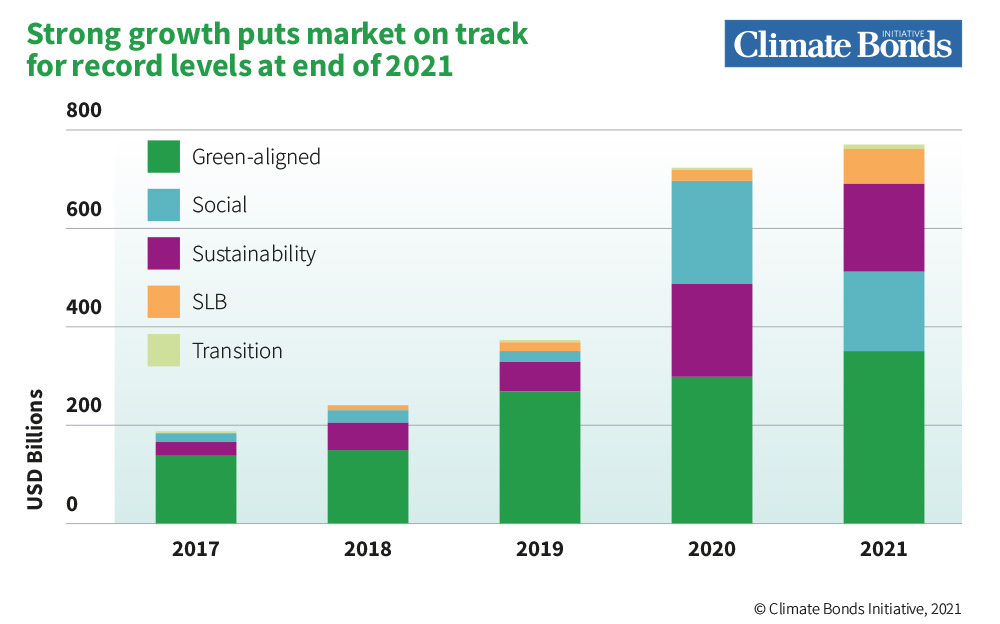Sustainable Finance 101: Sustainability Linked Bond Principles (SLBP) and Sustainability Linked Loan Principles (SLLP)
ESG & Sustainability

The background of SLBP and SLLP
SLB and SLL are some of the latest forms of sustainable finance instruments in the market and are rapidly growing.
In 2019, an Italian energy company ENEL launched the world’s first sustainability-linked bond
The ICMA published the SLBP in 2020 and Q&As to support the Principles in 2021 while the SLLP was published in 2019 by APLMA, LMA and LSTA.
Unlike the existing Green, Social and Sustainability (GSS) bonds/loans, the funds raised by SLB and SLL can be used for general corporate purposes, including both OPEX and CAPEX. The unrestricted use of the funds provides flexibility for the issuer on the occasion where companies have difficulties identifying specific projects to be eligible under GSS categories.
The five core components in SLBP and SLLP
Selection of Key Performance Indicators (KPIs)
As defined in SLBP
“KPIs are quantifiable metrics used to measure the performance of selected indicators.”
The issuers need to select KPIs which can measure the sustainability performance at a corporate level.
A good KPI should be:
- material to the issuers’ businesses
- measurable
- quantifiable
- benchmarkable
Calibration of Sustainability Performance Targets (SPTs)
Next, the issuers have to explain the strength and ambitiousness of the SPTs.
As defined in SLBP, SPTs are
“measurable improvements in key performance indicators on to which issuers commit to a predefined timeline. SPTs should be ambitious, material and where possible benchmarked and consistent with an issuer’s overall sustainability/ESG strategy.”
A good SPT should be:
- beyond “Business as usual (BAU)” trajectory
- benchmarkable (own performance, peers, reference to science)
- consistent (e.g. in terms of methodology and measuring units)
- align with the issuers’ ESG strategy
- with predefined timeline such as base year and target year (Pro-forma adjustments of baselines might be needed)
- able to provide actions being taken to achieve the SPTs
Bond/Loan characteristics
The bond and loan characteristics can vary depending on whether the KPIs could reach the predefined SPTs. For example, the margin under the relevant bond/loan agreement may be increased where the borrower fails to meet the KPIs, or vice versa.
Reporting
The issuer should publish a report annually to provide up-to-date information about the KPIs and SPTs.
In SLBP Appendix II, there is an SLB disclosure data checklist for issuers to make reference to. Within the table, some actions are classified as “recommended” while some are classified as “necessary”.
Verification
Different from GSS bonds/loans, verification is mandatory in linked instruments.
Issuers have to seek independent and external verification to verify whether their SPTs are on track.
Appendix
The future of SLB and SLL
According to the CBI Sustainable Debt Market Summary Q3 2021, the SLB segment has seen rapid growth.

Although the linked instrument market is still developing, it has the enormous potential to be as sizeable as green bonds as issuers value its flexibility on the fund usage.
There are some factors that could potentially hinder the growth of linked instruments. First, the opacity of the funding is questionable, since the issuer has no restriction on how the fund will be spent. Some investors might prefer to invest in GSS bonds since it is mandatory to disclose project details in an annual review. Secondly, issuing linked instruments might lead to green(/social)washing, especially when the KPIs and SPTs seem to be easily achievable. Thirdly, it requires technical expertise to understand and analyze the ambitiousness and strengths of the SPTs which might drive some ethical investors with little knowledge in that field away. Fourthly, the development SLB and SLL are still not mature, there has been some debate around their return and the credit risk as compared with GSS bonds/loans. Investors might adopt a wait-and-see approach.
Sustainability re-linked bond?
Bank of China (BOC) has issued the World’s First Sustainability Re-Linked Bond (SRLB) in late 2021. The fund will be used to finance or refinance some of the bank’s existing SLLs.
According to BOC, the company
“will issue offshore Sustainability Re-Linked Bond in alignment with relinking mechanism as defined in the Management Statement, with reference to the four core components of relevant International Capital Market Association (“ICMA”) principles, as well as referring to the five core components of Sustainability Linked Loan Principles 2021, and the proceeds raised from Sustainability Re-Linked Bond will be used to finance and / or refinance eligible Sustainability Linked Loan projects.”
There are two novel features as explained in this article. First, there is a relinking mechanism between the SRLB’s Coupon and SLL’s margin rate. The bond coupon is the sum of 1) the base coupon rate and 2) the SRLB coupon adjustment. Secondly, BOC uses a ‘step-down’ approach, meaning bondholders will lose money if the underlying SLL borrowers manage to surpass their sustainability targets.
Details of this SRLB can be found here: Bank of China Plans to Announce its First Sustainability Re-Linked Bond Transaction in Offshore Market (boc.cn)
Other useful resources
- Sustainability-Linked Bond Principles Sustainability-Linked Bond Principles (SLBP) » ICMA — International Capital Market Association (icmagroup.org)
- Guidelines for Green, Social, Sustainability and Sustainability Linked Bonds External Review Guidelines-for-GreenSocialSustainability-and-Sustainability-Linked-Bonds-External-Reviews-February-2021–170221.pdf (icmagroup.org)
- Sustainability Linked Loan Principles Sustainability Linked Loan Principles (SLLP) — LSTA
- Guidance on Sustainability Linked Loan Principles Guidance on Sustainability Linked Loan Principles (SLLP) — LSTA
Comments